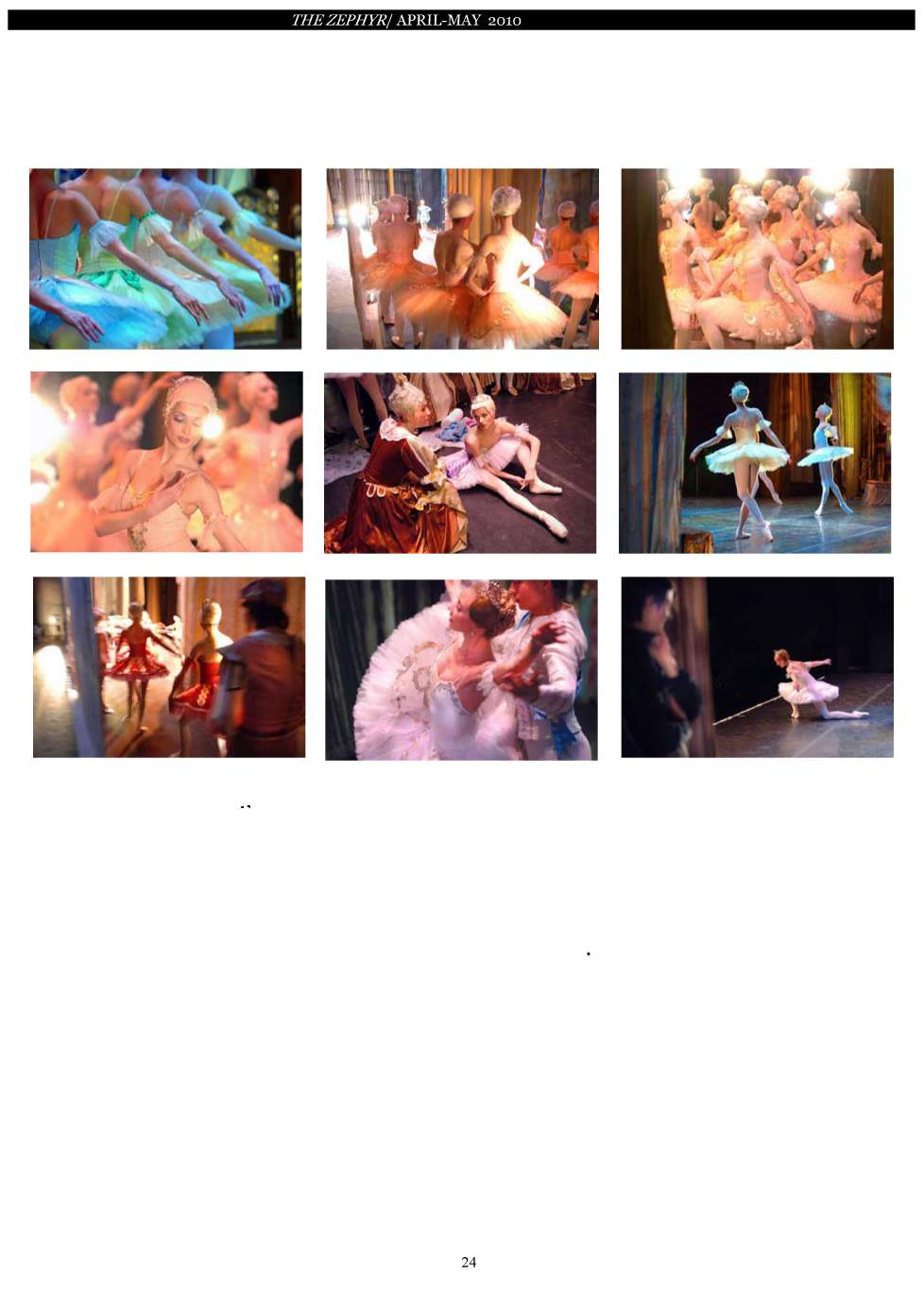<<Prev Home PDF Next>>

Channeling Degas
Michael Brohm
Standing
in the wings of the stage, the dancers run past on both sides, flowing
around me like a quick stream. Irs just before curtain. The ballerinas
are onstage stretching, primping, practicing gestures and poses, all
bathed in muted color and hairpins.As the music starts, they
stride
quietly out of the darkness into theglow of performance. The dancers
fly effortlessly above the stage, a practiced smile on their lips
masking the extraordinary effort. At scene changes, dancers run
offstage panting vigorously. I'm surprised it's not heard by the
audience. A few quick breaths, then back onstage, into the light. I've
put myself here, in the middle of a Degas painting. I'm watching the
scene as if I were Degas, standing at the side of the stage, just out
of sight, studying the dancers, noticing the grace of a hand, the
position of feet, a bend at the waist. His paintings are nere...
ballerinas in soft pastels of tulle and velvet, lit from below by the
warm glow of stage lights. Degas had painted racehorses in his earlier
years... perhaps recognizing the stamina, musculature and beauty in
both the horse and the dancer. Being Kentucky bred, I understand the
connection/attraction. These are mythical, magical creatures pushing
their bodies to the limit, enduring the pain of the beautiful, brutal
performance.
Brutality
is no stranger to ballet in Russia. Before World War 11, the Kirov
Ballet made it's home in Leningrad. As Hitler's troops advanced on the
besieged city,
the
ballet was evacuated to the city of Perm. Families were started, houses
were built and friends were made, prompting a group of dancers and
instructors to
remain in Perm after the war. Perm is now home to The Tchaikovsky Ballet and
the Perm Ballet Academy.
<<Prev Home PDF Next>>